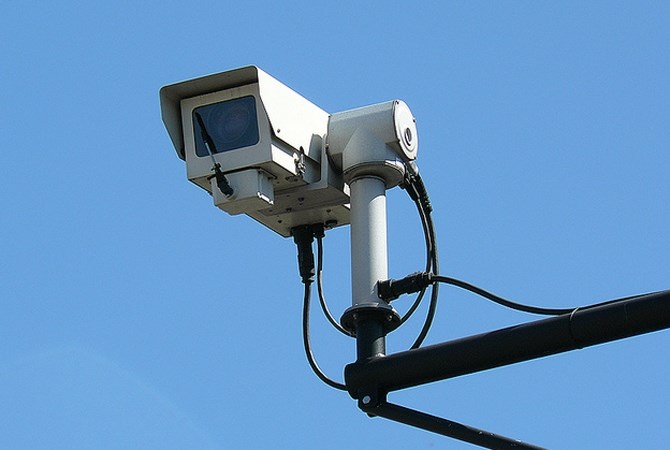
Image Credit: wikipedia.org
February 08, 2018 - 6:30 PM
KELOWNA - News that B.C.’s acting privacy commissioner had singled out Kelowna in a public memo as potentially violating privacy by monitoring surveillance cameras came as a surprise to the city.
“The privacy commissioner reached out to us just before Christmas to let us know he was aware of our council budget deliberations (about surveillance cameras) and had some questions,” risk manager Lance Kayfish said. “He never let us know he was going to mention us in this memo.”
Kelowna council in December agreed to spend $30,000 to officially being a live monitoring program out of a secure room in the Chapman parkade.
Kayfish said 208 of the of the more than 368 surveillance cameras are already in place in the city’s three downtown parkades, with another 37 at the Glenmore Landfill and 18 more at the city works yard on Hardy Road.
There are another 69 surveillance cameras at various civic buildings including Kelowna City Hall, Memorial Arena, rec centres and the Kelowna Fire Department halls. That also includes 25 external street cameras in six locations: Stuart Park (7) City Park (9) Ben Lee Park (6) and one each at the foot of Leon and Lawrence Avenues.
Kayfish says the street cameras are located based on “historical trends of crime and public safety issues” and are well marked.
Kelowna has already conducted a two-month trial of the program, Kayfish said, test monitoring cameras at all the sites with the focus primarily on the downtown parkades.
“Unfortunately, parkades tend to attract unwanted behaviours,” Kayfish added.
In the memo, acting information and privacy commissioner Drew McArthur acknowledged consulting with the Kelowna, as well as Richmond and Terrace over their own plans for surveillance cameras.
These proposals all assume that video surveillance prevents crime and justifies the persistent invasion of the privacy of law abiding people who are just going about their day-to-day business,” he writes.
“But what Richmond, Terrace and Kelowna are ignoring is that for all its monetary and privacy costs, there is little evidence that surveillance works.”
Kayfish said the surveillance monitoring program was designed under guidelines provided by the privacy commissioner which he says do show monitored cameras to be more effective than those that simply record automatically.
“During our trials we found it to be very effective at reducing property damage to patron’s vehicles,” Kayfish said. “In fact, it may have saved a life as well by creating an early intervention when someone was overdosing in the parkade."
Kayfish said the surveillance program is not live yet, in any event, and the city would be talking further with McArthur in an effort to ease concerns.
Should the program proceed as planned, Kayfish said security contractor Palladin Security, which already work for the city, would take over monitoring duties.
Kayfish says there are strict protocols about who can view the camera monitors will be in place and the system does not allow random recordings to be made.
This is not the first time Kelowna has been in the spotlight over surveillance cameras.
In 2001, federal privacy commissioner George Radwanski sued the city in a bid to have it shut off a camera operated by the Kelowna RCMP which had been used to monitor the area around the Queensway bus loop.
Kelowna RCMP agreed to turn on the camera only when a crime was suspected of occurring but Radwanski wasn’t satisfied, although he ultimately failed in his bid to have the camera removed.
To contact a reporter for this story, email John McDonald or call 250-808-0143 or email the editor. You can also submit photos, videos or news tips to the newsroom and be entered to win a monthly prize draw.
We welcome your comments and opinions on our stories but play nice. We won't censor or delete comments unless they contain off-topic statements or links, unnecessary vulgarity, false facts, spam or obviously fake profiles. If you have any concerns about what you see in comments, email the editor in the link above.
News from © iNFOnews, 2018